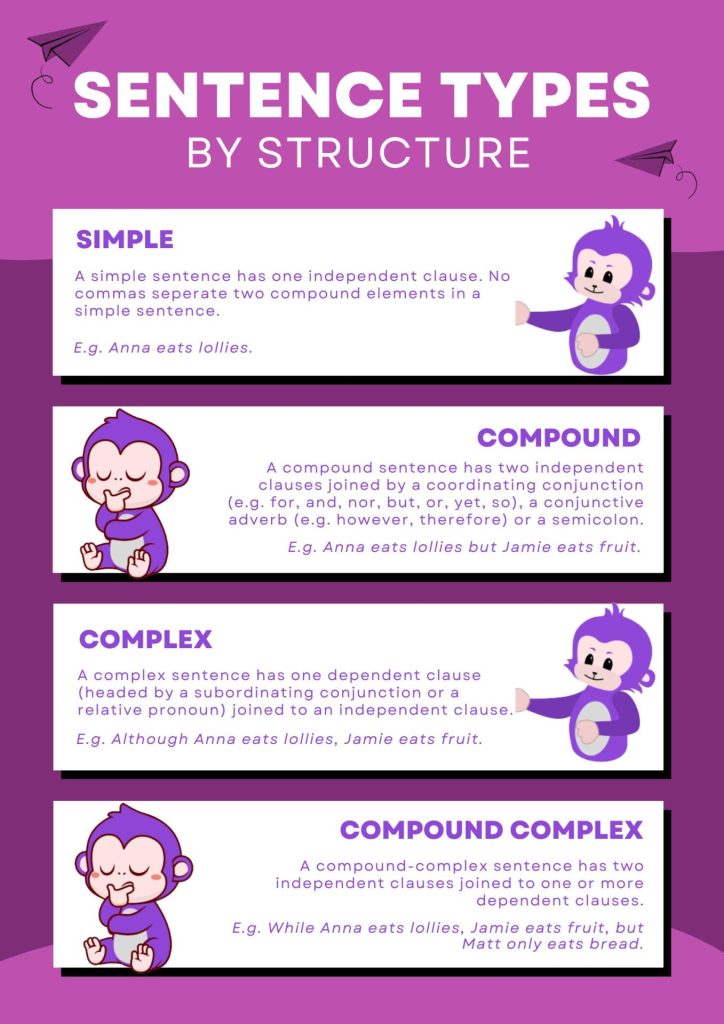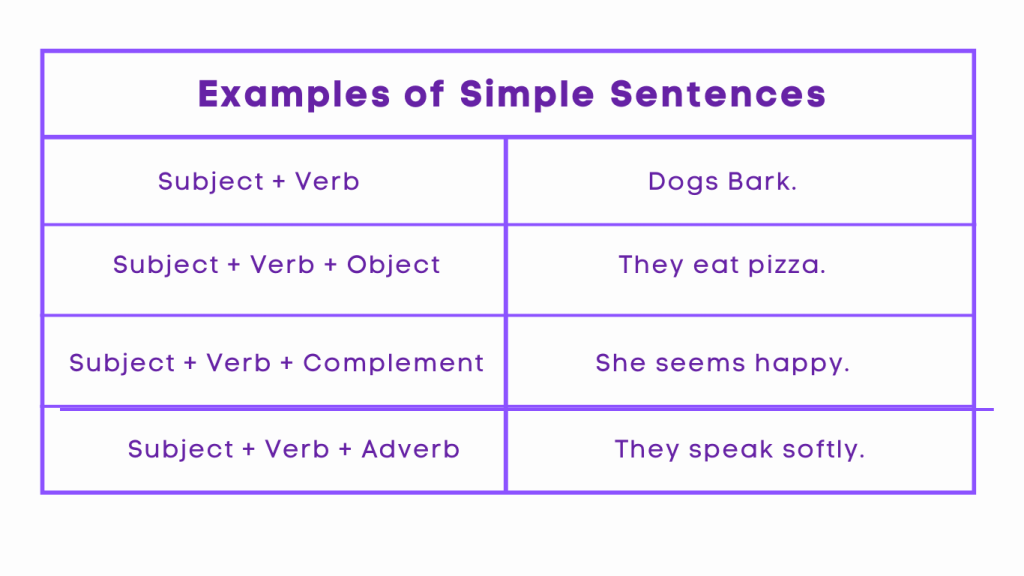What are Simple Sentences? – Meaning and Examples
Table of Contents
Introduction
Simple Sentences
In the realm of language and grammar, a simple sentence holds a fundamental place. It is the most basic and essential unit of communication, conveying a complete thought with clarity and conciseness. Understanding the structure and formation of a simple sentence is crucial for effective communication and writing.
Analogy of Definition
What is a Simple Sentence?
A simple sentence consists of a single independent clause that contains a subject and a predicate. The subject is the main focus of the sentence, while the predicate includes the verb and any additional information related to the subject. The structure of a simple sentence is straightforward as compared to the other types of sentences, making it an essential building block of language.

Method
Forming Simple Sentences
The process of forming a simple sentence involves identifying the subject, selecting an appropriate verb, and ensuring that the sentence conveys a complete thought. By following the basic structure and rules of grammar, you can create effective and impactful simple sentences.

Examples
Example of a Simple Sentence
Sentence: The cat sat on the mat.
In this example, “The cat” is the subject, and “sat on the mat” is the predicate. The sentence expresses a complete thought and follows the structure of a simple sentence.
Sentence: The birds chirped in the trees.
Subject: The birds
Predicate: chirped in the trees
Sentence: The children played in the park.
Subject: The children
Predicate: played in the park
Sentence: The sun shone brightly in the sky.
Subject: The sun
Predicate: shone brightly in the sky
Quiz
Tips and Tricks
1. Subject and Verb Agreement
Tip: Ensure that the subject and verb in a simple sentence agree in number and person. For example, “The cat sits on the mat” is correct, while “The cat sit on the mat” is incorrect.
2. Avoiding Run-On Sentences
Tip: Be mindful of creating run-on sentences by combining multiple independent clauses. Each simple sentence should stand alone and convey a single idea.
3. Using Commas in a Series
Tip: When listing items in a simple sentence, use commas to separate the items for clarity. For example, “I like apples, bananas, and oranges.”
4. Varying Sentence Structure
Tip: To enhance the flow and rhythm of your writing, vary the structure of your simple sentences. Use a combination of short and long sentences for impact.
5. Proofreading for Clarity
Tip: After forming simple sentences, proofread your writing to ensure that each sentence is clear, concise, and effectively conveys your intended message.
Real life application
Scenario: “The Job Interview”
During a job interview, it is essential to communicate clearly and effectively. Using simple sentences helps convey your qualifications and experiences with precision, leaving a positive impression on the interviewer.
Scenario: “Writing a Cover Letter”
When crafting a cover letter for a job application, simple sentences can express your enthusiasm, qualifications, and interest in the position concisely and persuasively.
Scenario: “Teaching a Lesson”
In an educational setting, using simple sentences helps students grasp new concepts and information with ease. Clear and straightforward communication is key to effective teaching.
Scenario: “Public Speaking”
When delivering a speech or presentation, incorporating simple sentences ensures that your message is easily understood by the audience, leading to effective communication.
Scenario: “Social Media Posts”
Whether sharing personal updates or promoting a business, using simple sentences in social media posts allows for quick and impactful communication with a wide audience.
FAQ's
Like? Share it with your friends
